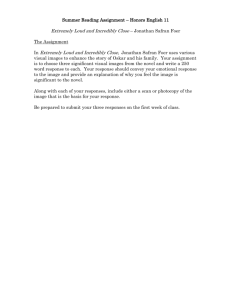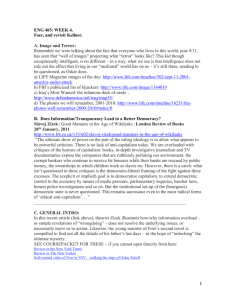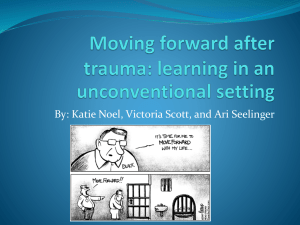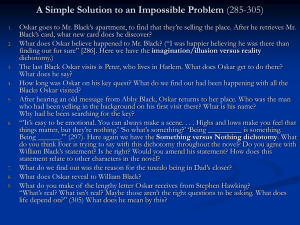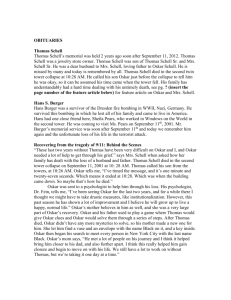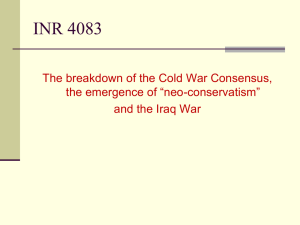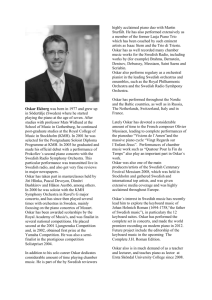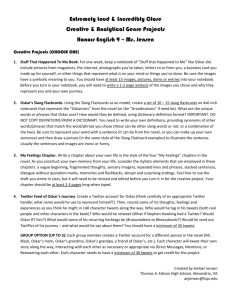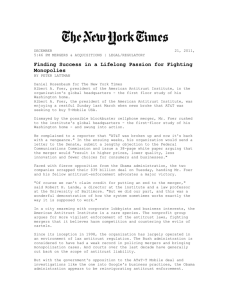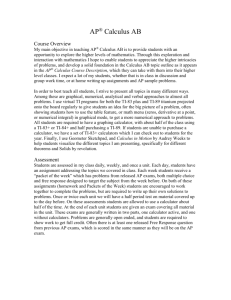WR Critical Review
advertisement
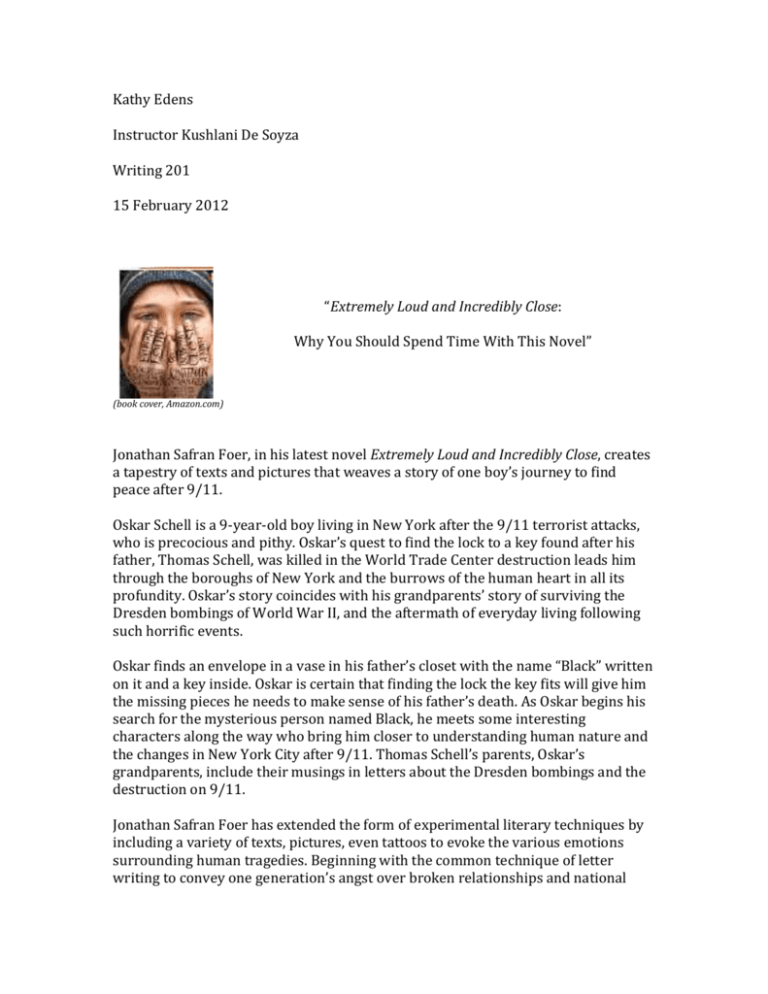
Kathy Edens Instructor Kushlani De Soyza Writing 201 15 February 2012 “Extremely Loud and Incredibly Close: Why You Should Spend Time With This Novel” (book cover, Amazon.com) Jonathan Safran Foer, in his latest novel Extremely Loud and Incredibly Close, creates a tapestry of texts and pictures that weaves a story of one boy’s journey to find peace after 9/11. Oskar Schell is a 9-year-old boy living in New York after the 9/11 terrorist attacks, who is precocious and pithy. Oskar’s quest to find the lock to a key found after his father, Thomas Schell, was killed in the World Trade Center destruction leads him through the boroughs of New York and the burrows of the human heart in all its profundity. Oskar’s story coincides with his grandparents’ story of surviving the Dresden bombings of World War II, and the aftermath of everyday living following such horrific events. Oskar finds an envelope in a vase in his father’s closet with the name “Black” written on it and a key inside. Oskar is certain that finding the lock the key fits will give him the missing pieces he needs to make sense of his father’s death. As Oskar begins his search for the mysterious person named Black, he meets some interesting characters along the way who bring him closer to understanding human nature and the changes in New York City after 9/11. Thomas Schell’s parents, Oskar’s grandparents, include their musings in letters about the Dresden bombings and the destruction on 9/11. Jonathan Safran Foer has extended the form of experimental literary techniques by including a variety of texts, pictures, even tattoos to evoke the various emotions surrounding human tragedies. Beginning with the common technique of letter writing to convey one generation’s angst over broken relationships and national tragedies, Foer uses a variety of prose forms and pictures to blend together his view of how quixotic human nature can be. Without being over-sentimental, Foer uses a grandmother’s letters to her grandson to tell her life story and to give depth to one woman’s sorrows. We get a look into the circumstances of how she met her husband and how their lives unfolded through her own words, an art that can be over-done and one that is hard to accomplish in literature successfully; however, Foer pulls it off with style and grace. Another form of letter that Foer uses is an absent father’s letters to his son over the course of his son’s life, as Oskar’s grandfather left his wife and son before Thomas Schell was born. Once again, without sentimentality and maudlin tripe, we get a glimpse into the machinations that make a man desert his family. Foer shows us the father’s need to tell his son his story, even as he runs out of paper. There are pages of typed text where the grandfather begins to type over already written text in an effort to get all of the words out, and it becomes a jumble of ink, effective symbolism of words turning into nonsense. Finally, Foer uses photographs to tell part of his story. There are pictures of various doors with locks; pictures of apartment fronts, bridges, an elephant, a roller coaster, a skeletal hand, and flights of birds; all used in lieu of words to express a moment’s truth. The most poignant pictures are at the end of the novel where several photographs of a body falling from the top of the world trade center are shown backwards, so that as you flip through the pages, the body is floating up, back into the building, symbolizing one of Oskar’s greatest wishes, that time could be reversed. Foer’s use of these techniques creates an exceptionally strong and vibrant piece of literature, a must-read for anyone interested in experimental fiction. * * * * * * * * * * * * * * * * * * * * * * * * * ANALYSIS: One technique I used to match my book review with the intended audience was based on Carlin Romano’s interview in the article, “Book Reviews by Richard D. Bank.” In response to the question “How do you determine what book to review?” Romano states, “A mix of considerations that include personal interest in the subject, importance of the book or author in the marketplace and culture, size of the book versus time available to read it, and the feeling that I have something to say about the subject or writer.” Based on Romano’s advice, I researched books that were on the New York Time’s bestseller list that would be of interest to most readers. I chose this book because normally I don’t read experimental fiction, but this book has been made into a major motion film and, thus, peaked my interest and I knew would be of interest to a wider audience. While no overt gender discrimination was evident, I do know from prior literature courses that women authors are traditionally underrepresented in the publishing industry. I was not surprised to note that the majority of bestsellers listed on the New York Times list were written by male authors.
